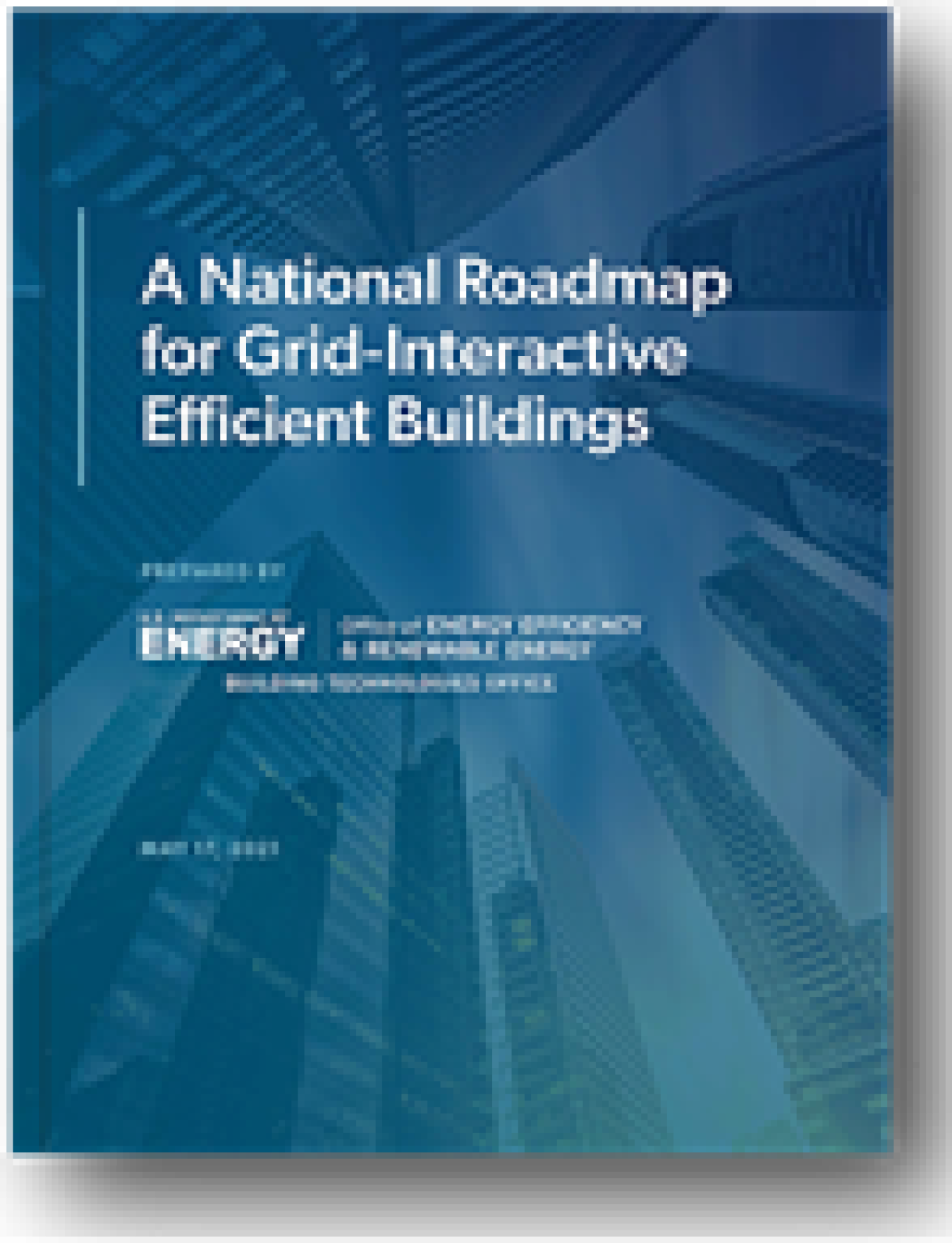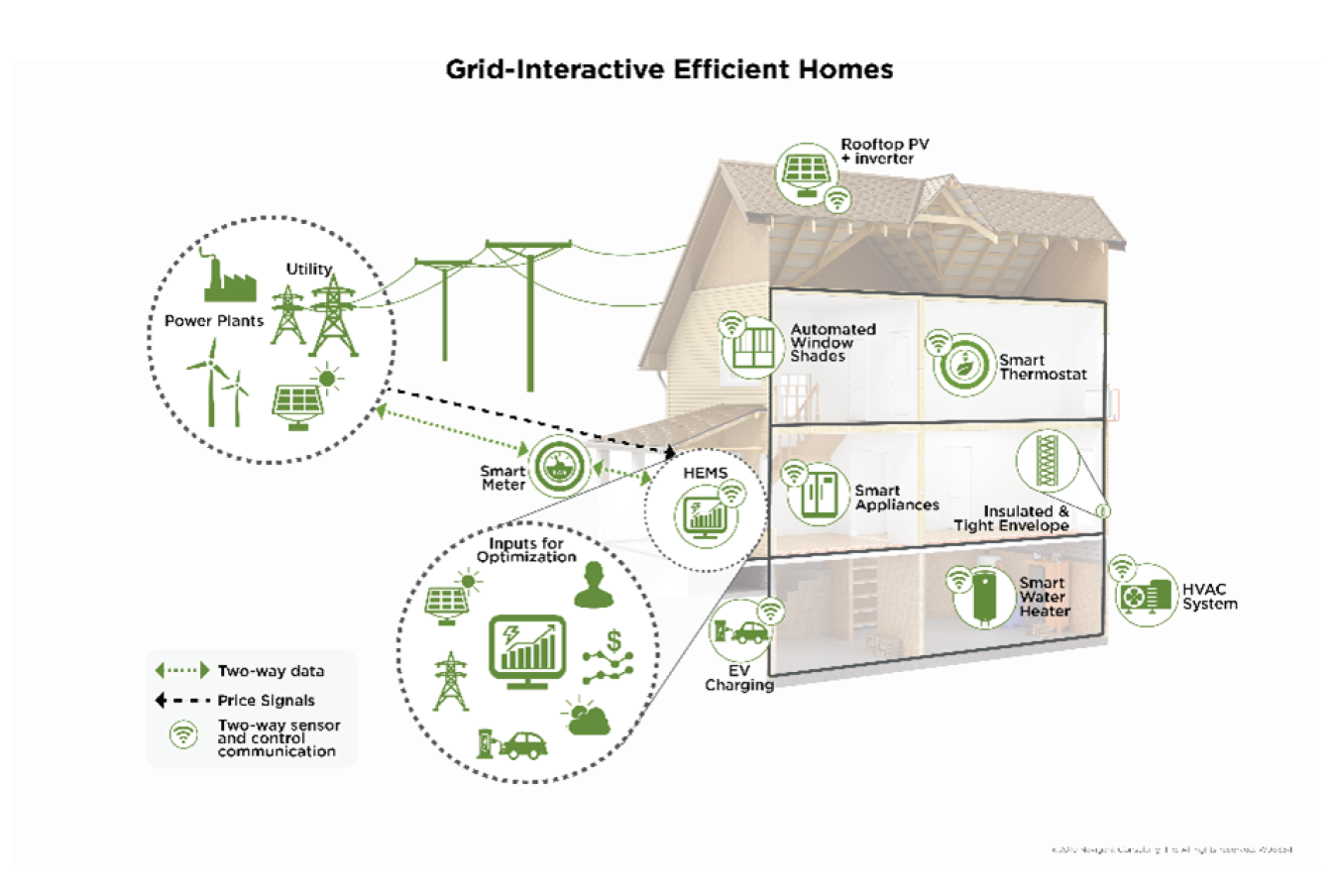The time has arrived for buildings to stop being inefficient energy consumers and start being flexible energy resources.
June 17, 2021
The time has arrived for buildings to stop being inefficient energy consumers and start being flexible energy resources. DOE’s new National Roadmap for Grid-Interactive Efficient Buildings, released on May 17 by Energy Secretary Jennifer M. Granholm at the White House Buildings Decarbonization Roundtable, can help facilitate this transition.
This story starts in 1882 when Thomas Edison threw the switch at the world’s first commercial power plant to power 400 lamps … since then buildings have consumed the lion’s share of U.S. electricity, today accounting for three-fourths of the total and even more at peak. Yet, buildings consume power indifferent to grid conditions, blind to the high costs and threats to reliability posed by high peak demand and grid stress; inflexible to the opportunities offered by variable, carbon-free renewable power sources; and senselessly missing the revolution in smart and connected technologies.
Grid-interactive efficient buildings (GEBs) can transform our inefficient buildings sector into a major flexible energy resource. (More GEB: Fact sheet and site). The National Roadmap provides for a rigorous analysis of the benefits of grid-interactive efficient buildings (GEBs) and a series of achievable, actionable recommendations for accelerating their adoption.
The Roadmap shows that GEBs can make our power system more reliable, affordable, and conducive to job-creation—all while saving an estimated $100-200 billion over the next two decades. Crucially, the Roadmap also finds that GEBs can cut CO2 emissions by at least 80 million tons per year by 2030, or 6% of total power sector CO2 emissions. That is more than the annual emissions of 50 medium-sized coal plants, or 17 million cars.

The Roadmap’s authors—a top-tier team led by LBNL, the Brattle Group and DOE’s Building Technologies Office (BTO)—conducted integrative modeling, new analyses, and in-depth interviews with more than 100 leading experts in the field. The Roadmap uses these data to identify the most important challenges and opportunities posed by the full implementation of GEBs and the associated demand flexibility.
Finally, the Roadmap lays out an ambitious new goal: Triple the energy efficiency and demand flexibility of the buildings sector by 2030. To achieve this goal, the Roadmap recommends 14 specific actions organized under four overarching initiatives:
- Advancing GEBs through R&D to improve technology interoperability and integration, along with specific hardware improvements.
- Enhancing and communicating the value proposition of GEBs to consumers, utilities, aggregators, grid operators, and regulators.
- Empowering users, installers, and operators by developing tools that co-optimize energy, non-energy, and financial benefits, and training workers on these innovative technologies.
- Using federal, state, and local government actions for GEB deployment, including “leading by example” with government buildings, expanding funding and financing, setting codes and standards, and establishing targets.
BTO is ready to work with anyone and everyone who shares our vision of an affordable, reliable, and productive future for the American buildings sector and power grid. Collaborators inside and outside of government can rely on BTO’s support and guidance for their research and demonstration efforts.
Recently, BTO hosted two webinars on the Roadmap that surpassed maximum audience capacity, demonstrating the broad interest in this issue. In the coming weeks, BTO will provide further information through a series of blogs on the following topics:
- Validating advanced GEB technologies in the Avista Eco-District “living laboratory”
- Building energy codes and GEBs: where policy and technology intersect
- The new CalFlexHub established by the California Energy Commission and Berkeley Lab
- The distributed energy resource (DER) question: how to best integrate with GEBs and what’s the role of alternative tariff and regulatory approaches
We are eager to begin this ambitious undertaking. We hope you will join us in our effort to accelerate GEB implementation, renewable power integration, and the revitalization of our power grid and economy.
Please stay connected.

